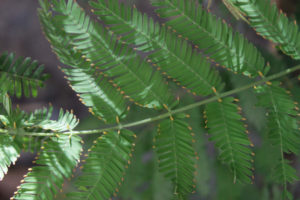¡Saludos desde Panamá! (Greetings from Panama!)
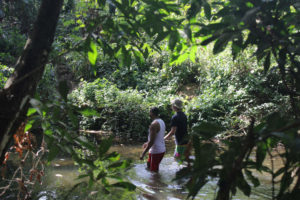 is Ben reporting back to you all at home. Yesterday we went to the Caldera River which is situated relatively close to where we are staying in Pedasí. I actually went to this same river two days ago with my host family, so yesterday I served as a guide for everyone coming. When I went with my family I was able to enjoy the more fresh and cold climate that the river creates. Usually the heat and the sun can be very oppressive on the mind and body, but going to the river was very refreshing. After
is Ben reporting back to you all at home. Yesterday we went to the Caldera River which is situated relatively close to where we are staying in Pedasí. I actually went to this same river two days ago with my host family, so yesterday I served as a guide for everyone coming. When I went with my family I was able to enjoy the more fresh and cold climate that the river creates. Usually the heat and the sun can be very oppressive on the mind and body, but going to the river was very refreshing. After 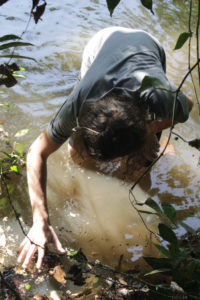 swimming and playing with my new brothers and my new sister, the oldest brother told me to come with him to see the monkeys. I put on my sandals and a camouflage bucket-hat, and was then ready to go. The water went up to my waist in the deepest parts of the
swimming and playing with my new brothers and my new sister, the oldest brother told me to come with him to see the monkeys. I put on my sandals and a camouflage bucket-hat, and was then ready to go. The water went up to my waist in the deepest parts of the 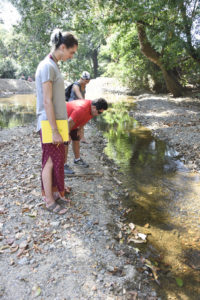 river, and barely touched the soles of my feet in the most shallow parts. There was one area where we could walk alongside the river where we could also smell and see the excrement of the monkeys. We knew that we were close. After wading along for a few more minutes the oldest brother told us to stop and to listen. A few seconds after, we could hear the monkeys. We ventured forth and when I looked up I could see them. The monkeys were small and dark brown, with little patches of fur that almost looked orange in the sunlight. They were eating, and some even got into a fight. My siblings and I were even lucky enough to see a baby that couldn’t have been much larger than a stapler. The environment was both lush yet dry at the same time. The leaves of all the plants were similarly shaped like ovals. Leaves, both brown and green, covered the forest floor and the surface and bottom of the river. Images of this experience in my life will remain in my mind forever.
river, and barely touched the soles of my feet in the most shallow parts. There was one area where we could walk alongside the river where we could also smell and see the excrement of the monkeys. We knew that we were close. After wading along for a few more minutes the oldest brother told us to stop and to listen. A few seconds after, we could hear the monkeys. We ventured forth and when I looked up I could see them. The monkeys were small and dark brown, with little patches of fur that almost looked orange in the sunlight. They were eating, and some even got into a fight. My siblings and I were even lucky enough to see a baby that couldn’t have been much larger than a stapler. The environment was both lush yet dry at the same time. The leaves of all the plants were similarly shaped like ovals. Leaves, both brown and green, covered the forest floor and the surface and bottom of the river. Images of this experience in my life will remain in my mind forever.
—Ben
Steve Here. The group went back to the site the day after Ben visited it with his family, and, after discussing basic concepts of tropical forest structure, we tried to describe the forest we were in. It’s technically a gallery forest, which is a more evergreen forest than the surrounding forest away from the river. We discussed epiphyte presence on the trees (we saw none), presence of vines (definitely present but fewer than the other forest we will see and some other characteristics too. We looked at the soils, which were very compact with 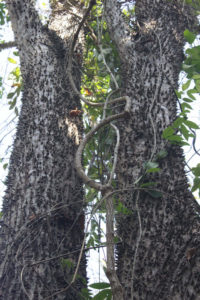 almost no organic layer. There were an abundance of dry leaves on the ground, much like October back home. Many trees in this area shed their leaves in the dry season. After this discussion the group broke up and each student found a place to sit in the forest, or by the river, and entered, in their journals, observations, inferences, questions and little mini-hypotheses as to what might be going on in what they were seeing. After a little debriefing students swam in the dammed up small river that Ben describes above. On the way out we paused to look at ant lions and to observe and discuss the tight mutualistic association between Psuedomyrmex ants and the Bullhorn Acacia (a small tree).
almost no organic layer. There were an abundance of dry leaves on the ground, much like October back home. Many trees in this area shed their leaves in the dry season. After this discussion the group broke up and each student found a place to sit in the forest, or by the river, and entered, in their journals, observations, inferences, questions and little mini-hypotheses as to what might be going on in what they were seeing. After a little debriefing students swam in the dammed up small river that Ben describes above. On the way out we paused to look at ant lions and to observe and discuss the tight mutualistic association between Psuedomyrmex ants and the Bullhorn Acacia (a small tree).
—Steve

